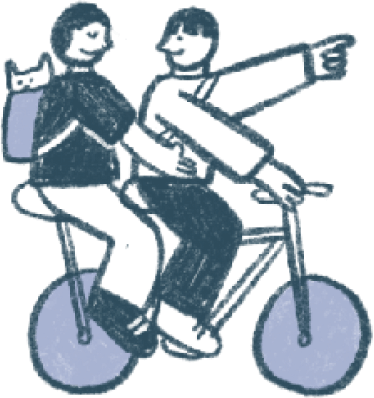Sapa: Your Essential Guide + How to Ditch the Crowds [2025]
What to see, how to get there and how to ditch the crowds!
![Sapa: Your Essential Guide + How to Ditch the Crowds [2025]](https://d18sx48tl6nre5.cloudfront.net/webp_xl_c5d2dcf9ace7da16515a865be8675dbd.webp)
Sapa is Vietnam's most popular spot (other than Halong Bay!) for a reason – stunning views, easy for all ages, and most locals speak English. It's crowded but we still think it's worth a visit for its unique mix of nature, hill tribe communities, and social impact.
The Basics
Is Sapa Worth It?

Sapa's a must-visit if you want breathtaking rice paddies, easygoing hikes, and a chance to experience Vietnam's diverse ethnic groups. Be prepared for crowds though, as it's a popular backpacker spot.
What makes Sapa truly special to us is how it empowers local women. Traditionally in the H'mong hill tribe, women were homemakers, but tourism has flipped that! Women here are your guides and shopkeepers, breaking traditional roles and gaining a stronger voice in their community. Just by visiting Sapa, you are giving local women a voice in a predominantly patriarchal society!
Getting There

The closest international airport to Sapa is in Hanoi. You can reach Sapa from Hanoi by various means, with the most common options being sleeper buses and trains.
- Bus: To get from Hanoi to Sapa, many travelers choose the overnight sleeper bus, which takes about 6-7 hours and costs around $10 USD for a one-way ticket. These buses are quite comfortable for sleeping, and many of them have reclining chairs.
Most people take the 10 pm bus from Hanoi, arriving in Sapa Town around 4 am. You're allowed to stay on the bus until about 6 am, which is perfect timing because many trekking tours start around 7 or 8 am! - Train: For a more comfortable journey with a better night's sleep, we'd recommend the night train. All the train companies basically operate different cabins on the same train. So although you're booking with different train companies, you'll actually be on the same train. Take Chapa Express for a more premium experience.
The night train departs from Hanoi train station at 10 pm, arriving at Lao Cai train station, where you'll then hop on a shuttle bus to reach Sapa Town by 7 am. This option allows you to maximize your time and start exploring as soon as you arrive. - Private car: If you're looking for a private journey, you can also take a car. It's 5.5 hours each way to get to Sapa, and you can also make it a road trip and visit other places along the way!
Best Time to Go
- Best: Our favourite time to visit Sapa is during autumn in September and October, because that’s when the rice fields turn a beautiful golden yellow and farmers begin harvesting. The weather during this period is also great for trekking.
- Good but Touristy: If you want green, go to Sapa in June when the rice fields turn an amazing lush green colour. But this is also the busiest period with lots of domestic travellers. Summer is also the rainy season, so be prepared for sudden storms.
- Avoid: If you want to do a homestay, avoid winter in Sapa (December - January) as it gets very foggy and cold. The homestays are very basic with no heating, so it may not be the most comfortable!
Things to Do in Sapa
1. Explore Rice Terraces

You can explore Sapa's rice paddies with a one-day tour from Sapa town, or opt for a deeper experience with a 2-3 day trek and homestay. Treks offer stunning scenery – rice terraces, waterfalls, bamboo forests – and a chance to connect with local ethnic communities.
While the scenery is beautiful, it's the heartfelt interactions with the hill tribes that make Sapa trekking truly special. It's a simpler way of life, and full of heart.
Pro Tips:
- Be aware that day tours can be mega-touristy, often visiting the same spots like Cat Cat village. To experience the rice fields in a more authentic way, consider a homestay or a private day trek where you can request quieter routes.
- Support local social enterprises by choosing trekking companies that empower local communities and offer a more responsible tourism experience.
2. Local Homestay

We’d highly recommend spending at least a night in a homestay because it’s the best way to experience Sapa. Not only will you get to explore more hidden routes, you’ll also get to enjoy home-cooked meals and really get to immerse in the warm hospitality of Sapa.
We’d go as far to say that you haven’t really experienced Sapa unless you’ve done a homestay, because that’s by far the best bit of Sapa!
3. See the REAL Sapa

If you're looking for the real Sapa, this is IT. Just a couple of hours away from the tourist crowds of Sapa town, Sin Suoi Ho offers equally stunning views, a powerful story of resilience, and a peaceful, uncrowded atmosphere. Sin Suoi Ho feels untouched by time, like Sapa before mass tourism.
But beyond its beauty, this village has a great story. Once struggling with opium addiction, Sin Suoi Ho chose a different path. Through determination and a shift towards sustainable agriculture and tourism, the village has built a brighter future. Guesthouses are cozy and clean, and while a bit further than Sapa, Sin Suoi Ho rewards visitors with a truly authentic experience and a chance to support a community that overcame hardship. Your homestay can likely arrange transport from Sapa Town.
4. Mount Fansipan

Sapa is also home to Mount Fansipan, Indochina’s highest peak! There are a few ways to climb Mount Fansipan: climb with overnight camping; a day climb, or pair a Fansipan climb with a homestay and rice terrace trek.
Pro Tips:
- Fansipan is seriously tough! It's harder than Mt. Kinabalu and meant for experienced hikers who enjoy a challenge. Ascending takes 5-7 hours, and has boulders and ladders!
- The summit is often foggy, so don't climb just for the views. Focus on enjoying the journey itself.
- Climbing down is brutal. Opt for the cable car descent to save your knees.
5. Visit Cosy Cafes

Before leaving Sapa, be sure to spend a few hours in Sapa Town and popping by a few local cafes. One of our favourites is Gem Valley, and is known to have the best views in Sapa. Enjoy a banana pancake, drink some Vietnamese coffee and have one last look at the beautiful Sapa scenery before heading back to Hanoi.
Another cosy place that trendy locals love is Color Bar. This cosy and hip place has a selection of exciting and yummy cocktails. 10/10 for ambience too!
6. Indigo Cloth Making

If you want to learn more about indigenous culture, start with the fascinating traditions of the Black Hmong people. The natural indigo plant is grown locally, and for generations, local Hmong people have been using the plant to dye their cloth and weave them into intricate patterns. This labour-intensive process symbolises the Hmong people's artistry and connection to nature.
Spend a day to learn about the indigo dyeing and cloth-making traditions of this vibrant community to get more deeply connected to local culture in a way that few tourists get to see. It is perfect for those looking to understand more about the local culture, and traditional crafts that are fast disappearing.
7. Red Dao Herbal Bath

One of our favourite things about Sapa is being able to experience the way various ethnic communities live, and the Red Dao community is particularly fascinating. We'd highly recommend trying out the Red Dao herbal bath which is steeped in tradition.
The Red Dao community have been using medicinal plants for their baths for generations, with each family passing down their own unique recipe. It's not just relaxing; it can do wonders for tired muscles and has a bit of that magical touch to it! Plus, taking part in this tradition makes you feel a little more connected with the local culture.
8. Support Social Enterprises

Trek with a social enterprise in Sapa to directly support local communities. These organizations empower H'mong youth by funding education, providing hospitality training, and creating fair job opportunities. While slightly pricier, the knowledge that your adventure makes a lasting impact is worth every penny.
9. Learn Black Hmong Cooking with Local Family

One of the most special parts of Sapa is getting a glimpse into the everyday life of its hill tribe communities, and learning to cook Black Hmong dishes with a local family is an experience not to miss.
Black Hmong cooking is so different from the usual Vietnamese cuisine—it’s cosy, hearty, and steeped in tradition. You'll be welcomed into a family home, where you'll not only learn to make these unique dishes but also hear stories passed down through generations. It’s more than just a meal; it’s a warm, personal way to connect with Sapa’s traditions and experience the heart of local family life.
10. Visit Local Markets
Sapa and its surrounds has lots of local markets, so if you're looking for souvenirs or you just love markets, you may like to visit.
Traditionally markets are not just for locals to trade at, but they're important social places for locals to gather and find love. While the main market in Sapa Town is now very touristy, you can find some fascinating, colourful markets further out. Here are some of the main ones from most touristy to least.
- Sapa Market (Every Day, in Sapa Town): this two-story traditional market is right in Sapa Town and opens daily. You can get all sorts of cheap souvenirs here, as well as fruits and vegetables. It's generally quiet Monday through Friday. Saturday mornings are somewhat busy, but Sunday morning is the big market day when the Black Hmong people from the furthest reaches of the district come to trade. It's not super special but it's fun to come on Sunday mornings to see the buzz of local activity.
- Bac Ha Market (Sunday mornings, 100km from Sapa Town): This is the largest market in the area, and has become more touristed in recent years. It's a great place for people watching as ethnic communities come from all around the area, and try local market food. But watch out for over-inflated tourist prices, and some degree of hassle!
- Can Cau Market (Saturday morning, 120km from Sapa Town): If you want a really local experience, this is probably it. There are far fewer tourists here, and it's really fun to people watch and just take in the buzz. You may not find much to buy here as it's mainly local household goods (e.g. fresh produce, livestock, farming equipment, and clothing), but it's a fun adventure.
Top Tips
1. Pack light

- Bring a backpack: For homestays, ditch the luggage and bring a backpack – it'll be way easier on steep hills. Motorbike rides can accommodate backpacks if needed (up to 60L in front with a smaller one on your back). If you're doing a day trek, the guides will let you drop your bags at their office.
- Good shoes: Trekking shoes with good grip are essential for safety, and bring lightweight, water-resistant clothes for Sapa's cool and often foggy weather.
- Bring layers! Layer up for winter, as it gets cold but you'll still sweat while trekking. Layers are also necessary for Fansipan!
2. Homestays are a must

Homestays are a must in Sapa! Having experienced both Sapa town and homestays, we can safely say that homestays let you truly connect with the heart of Sapa.
Pro Tips:
- Don't expect anything fancy. You'll have proper (non-squat!) toilets and showers, but expect simple sleeping arrangements with mattresses and no air conditioning or heating.
- Pack for cold! If visiting in winter (December-February), layers are essential as there's no heating. We wore 4 layers!
- Spring to Autumn stays will be pleasantly cool (averaging at around 25°C/77°F in July).
- A headlamp or flashlight is useful for navigating at night.
3. Buy Local Crafts
We don't usually go for touristy souvenirs, but Sapa is an exception. The beautiful handmade embroidery sold by Hmong women is a vital source of income for their families. You'll likely encounter these friendly women on treks, where they offer both assistance and their wares. Each piece takes days to create and costs less than $10 USD. While there's no pressure to buy, consider supporting these artisans and their families if you can!
4. Take a Private Guide

If you prefer a quieter experience and want to enjoy stunning views without the crowds, you might consider visiting Sin Suoi Hoi nearby, or take a private guide and request to go to less-touristed spots.
Frequently Asked Questions
How many days is enough for Sapa?
Most travellers come to Sapa for 2-3 days. We’d highly recommend spending at least 3 days here. If you'd like to visit a local market or go to Sin Suoi Ho, stay for an extra day! It'll be worth it because you'll get to see a side of Sapa that few travellers have seen.
- Day 1: Arrive in Sapa town from Hanoi in the morning. Spend the rest of your day wandering about Sapa town and the little cafes here. Spend the night in Sapa town.
- Day 2: Start your 2D1N trekking and homestay trip in Sapa valley. Take the ones that go a bit further away from the tourist trails so you can really appreciate the beauty of Sapa away from the crowds. Overnight at a homestay.
- Day 3: Explore rice paddies, local villages and enjoy the warm hospitality of the Sapa peoples. Finish your adventure at 8:30pm in the evening. Take a sleeper bus to Hanoi back at 10pm.
How to avoid the crowds in Sapa?

We've all seen the gorgeous photos of endless rice terrace views in Sapa, with not a soul in sight. But any visitor to Sapa knows that Sapa is backpacker central and it can be really hard to avoid the crowds. Here are 4 tips to ditch the crowds in Sapa!
- Go to Sin Suoi Ho village. This is a small former opium village a short drive from main Sapa town, and is basically what Sapa was like 20 years ago. You'll get the same views here but with a fraction of the crowds.
- Take a private guide. The private guides know the hidden paths to avoid the crowds, so you can have a seriously adventurous trek and see hidden gems that most tourists miss!
- Avoid join-in tours. The join-in tours tend to all go to the same places like Cat Cat village which can be quite soulless. If you are going on a join-in tour, do check the itineraries carefully and make sure they avoid the usual spots!
- Stay at a homestay instead of a hotel in Sapa town. Most tourists will stay in Sapa town, so if you would like a more heartfelt experience with much better views, we'd highly recommend a homestay!
What is the weather like in Sapa?

The weather in Sapa, Vietnam, varies depending on the season though you can generally expect some level of fog!
- Spring (March to May): Spring in Sapa has mild temperatures and blooming landscapes. It's a great time to visit for trekking and enjoying the lush green scenery.
- Summer (June to August): Sapa's summer is warm and wet, with occasional heavy rains. While the temperatures are relatively high, it can get quite foggy. This season is ideal for those who enjoy the vibrant, green rice terraces.
- Autumn (September to November): Autumn is a popular time to visit Sapa due to its pleasant weather. The skies are clear, and the temperatures are comfortable, making it a great time for trekking and outdoor activities. The terraces turn a gorgeous golden during this time.
- Winter (December to February): Winter in Sapa is cold, with temperatures dropping to near freezing. It's the best time to witness the beautiful snowfall in the region, but it's also the coldest and driest season.
In summary, Sapa's weather varies greatly with the seasons, so the best time to visit depends on your preferences. If you prefer milder temperatures and clear skies, consider spring or autumn. Summer offers lush greenery but lots of tourists, while winter provides a unique experience with the possibility of snow.
Check out our favourite Sapa experiences here 👇
Sapa FAQs
Sapa is a must-visit for its stunning rice terraces, easy hikes, and a chance to experience northern Vietnam’s diverse ethnic cultures. It’s definitely touristy, and Sapa Town itself isn’t the best, but if you skip the usual crowded trails like Cat Cat Village and Love Waterfall, you’ll find some incredible hidden spots.
One of the coolest things about Sapa is how tourism has empowered local women. In the past, H’mong women were expected to stay home, but now they’re guides, shop owners, and business leaders, breaking traditional roles. By visiting, you’re directly supporting them and helping create real change.
Sapa is famous for its breathtaking rice terraces, diverse ethnic groups like the H’mong, Red Dao, and Tay, and Mount Fansipan—the highest peak in Indochina. It’s also one of the best places in northern Vietnam for trekking, with trails through Muong Hoa Valley, Hoang Lien National Park, and remote villages.
There are three main ways to get to Sapa from Hanoi:
- Bus – The sleeper bus is the easiest and cheapest option (~$10 USD one-way). It takes 6-7 hours and buses leave around 10 PM, arriving in Sapa at 4 AM (you can stay on the bus till 6 AM).
- Train – Take the night train from Hanoi to Lao Cai (10 PM – 6 AM), then a shuttle bus to Sapa (arrives ~7 AM). It’s more comfortable than the bus, and if you want a premium experience, book Chapa Express.
- Car – A private car takes about 5.5 hours and is the most flexible option. It’s pricier but great if you want to stop at scenic spots like Silver Waterfall along the way.
Fly from Singapore to Hanoi, then take a bus, train, or private car to Sapa.
Yes! Sleeper buses are comfortable and safe, with berths for some privacy and reclining seats for sleeping. Don’t worry—they won’t be blasting music all night if you get the right sleeper bus. They’re the most popular way to get from Hanoi to Sapa.










